River Ganga has been a cradle of human civilization since time immemorial. Millions depend on this great river for physical and spiritual sustenance. People have immense faith in the powers of healing and regeneration of the Ganga. It is arguably the most sacred river in the world and is deeply revered by the people of this country. Rapidly increasing population, rising standards of living and exponential growth of industrialisation and urbanisation have exposed water resources, in general, and rivers, in particular, to various forms of degradation. The mighty Ganga is no exception.
With an objective to rejuvenate the river Ganga, the Government of India under the aegis of Prime Minister Narendra Modi launched an Integrated Conservation Mission, NATIONAL MISSION FOR CLEAN GANGA, approved as a ‘Flagship Programme’ by the Union Government in June 2014 with the twin objectives of effective abatement of pollution, conservation and rejuvenation of National River Ganga. The mission has also extended its objective to cleaning of Yamuna and enhancing economic activities along the river bank population creating new employment opportunities.
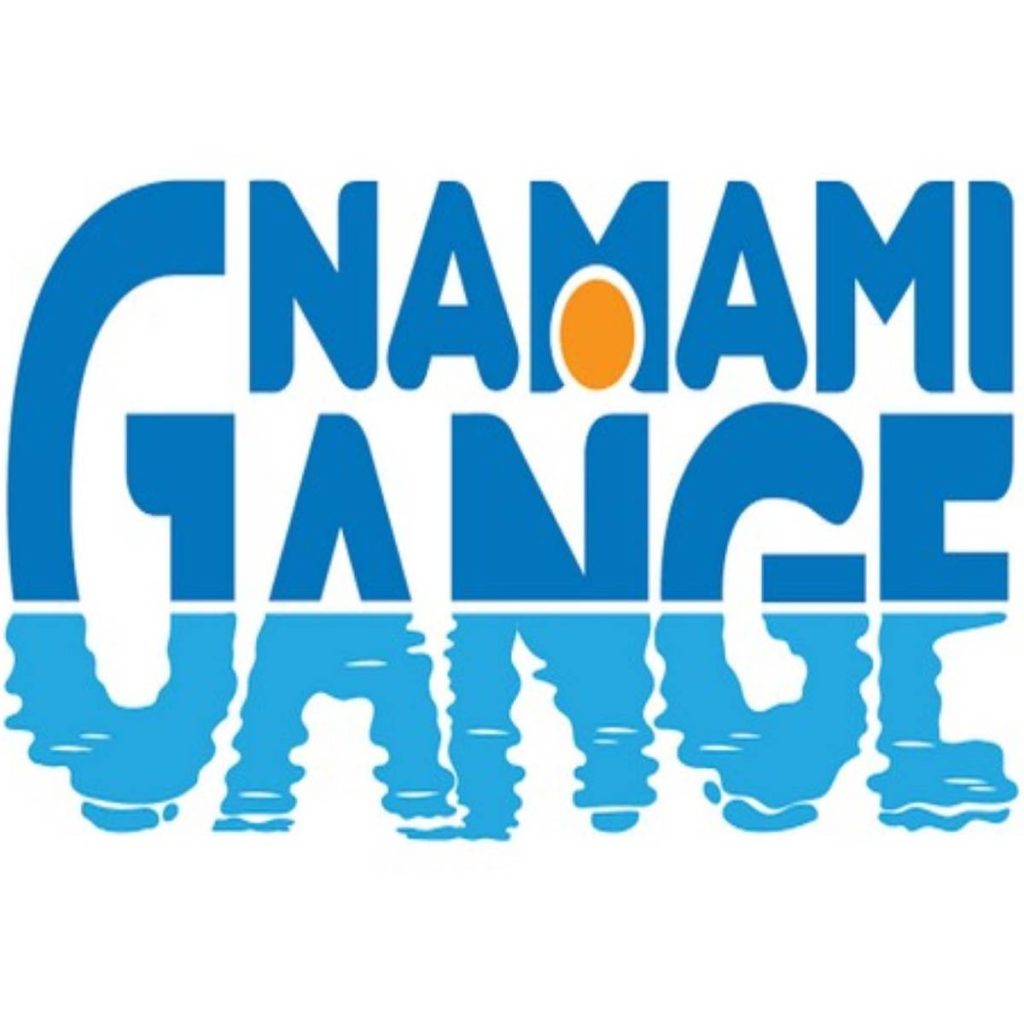
G. ASOK KUMAR, the Director General for the National Mission for Clean Ganga, popularly named as the “Rain Man of India”, spoke to Asian Lite on the road map for rejuvenating and securing Ganga-Yamuna and other rivers for a sustainable future and also enhancing economic activities along the river bank.
Q. Clean Ganga campaign has been going on since its inception in 2014 with several promising outcomes. What are your plans to take the mission ahead to newer heights, adding new dimensions to it?
A: Now-that as a part of the “Nirmal- Ganga” -clean river- concept, many projects for construction of Sewerage Treatment Plants (STPs) are sanctioned and some of these are completed, we are now looking for its sustainability with the help of community participation and an enabled and empowered Institutional setup. Arth Ganga concept aims to make the river-people connect using the economic- bridge. This was put forward by Hon’ble PM Modi ji himself in the National Ganga Council meeting held at Kanpur in 2019. This is to energise the economic activities along the Ganga River bank, opening up livelihood opportunities to the local people linked to the River Ganga and involving them to contribute in our efforts (Jan Ganga). We are also focusing on ensuring ecological flow in the river (Aviral Dhara) and compiling, collating and documenting our traditional wisdom as well as from the experiences gained and from the pioneering researched funded by NMCG (Gyan Ganga)
Q. You referred to make the mission Clean Ganga self- sustainable. What would be your roadmap to achieve it?
A: Assured peoples’ participation and an enabled and empowered Institutional setup with robust financial model is the key for sustainability under “Arth Ganga”. Monetization of the sludge and treated waste water from the STPs are a major source of revenue for the ULBs. Sludge can be used to produce manure or even generate bio-gas.
Encouraging farmers in 10 kms belt of the river to go for Zero-Budget Natural Farming (ZBNF) in the river basin area, by supporting them with natural manures from the sludge of the STPs, linking up with markets for selling their produce (Ghats as weekly markets- Ghat mein Haat”) are part of the Arth Ganga concept. The use of chemicals not only harms the soil but also contaminates the river. ZNBF would not only improve water quality but also increase biodiversity in the area. It would be a win-win situation for all as it would reduce agriculture expenses, increase quality of food grains, increase production in the long run, save water and improve water quality. About 40 floating jetties and 10 pairs of Ro-Ro terminals are being planned on River Ganga in the four states in the Gangetic belt, which will bring down the logistics cost for farmers in the movement of local produce. These small jetties along the Ganga can also be used for Ganga Artis and to boost local river tourism.
Another project we are planning is agro-forestry and grow medicinal plants within the 5 km range of the river. We are trying to connect local farmers with companies manufacturing ayurvedic medicines. Indian herbs are much in demand worldwide, particularly after the Covid-19 pandemic and we can avail this opportunity to generate revenues for people living around the river. We are also engaging Farmer Producers Organisations (FPOs) to market medicinal plants and agroforestry products.
Apart from providing benefits in terms of trade and access to markets, local community’s economic enhancement and passenger facilitation, the Arth Ganga will also ensure large scale skills enhancement and public/private sector capability development. Arth Ganga should catalyze economic development in the Ganga basin to generate economic benefit.
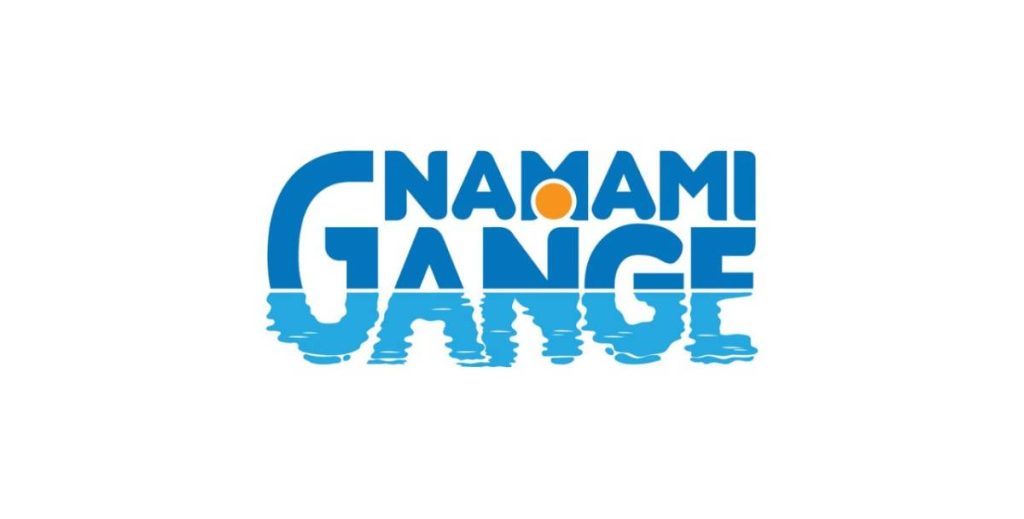
Q. It’s a huge population along the riverside to engage. What about other ways of creating employment opportunities centered around river Ganga?
A: Organic and ZBN Farming, local tourism, marketing of local products are some of the main identified livelihood opportunities. We have also approached CIFRI (Central Inland Fisheries Research Institute), Kolkata and asked them to give us Hilsa fish seeds to develop the fresh water fishery industry in river Ganga. Hilsa is a very popular and sought-after food fish in the Indian subcontinent. Freshwater fisheries would bring income to people living on river banks and they would take care of the river as it would generate revenues for them. We are contemplating cold storages at some designated places to ensure a better price for fish. Local people from the different walks of life, ‘Ganga Praharis’ are being trained to conserve the biodiversity of the river. As a result, we are sighting more and more Ganga Dolphins, due to their increasing numbers. This is a clear indication that water quality has improved in the river.

Q. What about the Sewage Treatment Plants (STPs) in towns around Ganga? What plans do you have to make them self-sustainable?
A: We have so far sanctioned 160 STPs in towns in and around the Ganga and its tributaries. Under the Hybrid Annuity Model, these projects have a built in Operation and Maintenance cost covering 15 years, but later the local municipalities will have to spend regularly to run these STPs. Our target is to make it economically viable and learn a few lessons from Suraj (Gujarat) and Tirupur. While Surat municipality earns more than Rs 140 crore annually by selling treated water to industry at the rate of Rs 45 per 1000 litres, the Tirupur Municipality’s net profit from the STP is around Rs 40 crore. We are working towards a similar business model for these STPs to make them economically viable.
Also, the local bodies can sell the treated water to industry. Secondly, since the treated water is rich in NPK (Nitrogen Potassium and Phosphorus), it can be used for irrigation purposes as well. This way it would reduce the usage of fertilizer, and conserve our ground water reserves. And precious potable water would not be used for non-potable purposes. Another by-product of the STP is sludge. We are also planning to make the best use of it. We can make biogas from the sludge. A similar project is there in Dinajpur in Varanasi, where a 140 MLD (Million Litre Per Day) plant is producing enough electricity to run the plant. Secondly, we propose making bio-manure from the sludge provided it meets the prescribed parameters, or making tiles out of it. It is practically possible; we only have to see how to make it economically viable.
Q. Can developing Ganga Ghats and beautifying them also earn revenue for the local authorities?
A: Of course, we are also working on these lines. The Ghats can be used as Haats also. We are constructing jetties in selected towns and these can be harnessed to promote tourism, trade and commercial activities. The Prime Minister is strongly of the view that we can protect Ganga only if we manage to generate revenue and livelihood for people living around it. Once it becomes a source of livelihood, people would automatically take care of the river. There are many historical and religious places around Ganga. If we manage to promote local tourism in these areas, the local authorities need not spend extra on managing these jetties.
In a nutshell, we are working to channelize the potential of river Ganga to generate revenue for the local authorities, business for local traders and employment for local youth. Once we manage to make a platform on these lines, our mission is complete and all stakeholders will try to keep the river clean.

Q. You recently participated in the Singapore International Water Week, Water Convention 2022 and spoke at length about Sustainable Wastewater Generation, Treatment and Management in Developing Countries and also about its success in India through Innovative Approach of NMCG. Could you please elaborate in brief?
A: Yes. A very important and innovative plan. We aim to develop a circular economy based on sludge management. While Zero Budget Natural Farming, Livelihood Generation Opportunities, Cultural Heritage & Tourism, Monetisation are the key areas of NMCG projects, Reuse of Sludge & Wastewater, Public Participation and Institutional Building is a very innovative approach towards monetizing the sludge and waste.
Phase-II of Namami Gange Programme will be on sewerage infrastructure creation in the tributaries of Ganga such as Yamuna and scaling up of PPP development efforts. The commitment of NMCG to develop a circular economy model focused on reclaim, reuse and recycling. One of the key areas of work in the future, he added, will be faecal sludge and septage management in urban local bodies and rural areas.
Tonnes of sludge is generated every day and we aim to develop a circular economy based on sludge management under Arth Ganga, which aims at connecting people with the river, we are trying to give some economic benefit to the stakeholders/people so that they have some interest in ensuring the river is clean.
A campaign is being run to keep the river stretches across India clean and drive the States to assess the total generated sewerage and the existing capacity and use the various schemes of the government to reduce the gap ensuring not a single drop of wastewater goes into the river. This will generate a lot of sludge- one of the verticals of Arth Ganga is ‘Zero Budget Natural Farming’ which aims at facilitating the natural farming process by providing natural manure/soil conditioner made out of sludge and reduce the use of chemicals and fertilizers by the farmers thereby developing a circular economy model in sludge management with economic benefits to the stakeholders (farmers in this case).
Q. The world today is concerned about water security. Your views please.
A: The whole world today is collectively striving hard to overcome the challenge of water shortage. The conservation of water and rivers is being given the due consideration globally, while a new consciousness has awakened in the country especially among the youth, regarding the conservation, development and ecological balance of rivers. One thing should be diligently followed and remembered in life, and that is Respect for Water. India is the largest exploiter of groundwater, and we extract around 250 billion liters of water from underground aquifers.
This water was saved beneath the surface by the efforts of our forefathers, and we must respect and cherish this gift while also ensuring its conservation for our future generations. To achieve 5 trillion economy water is the most limiting factor and apart from groundwater recharge the importance of rainwater harvesting must be emphasized through Catch the Rain: Where it Falls, When it Falls campaign. Programs like the Jal Jeevan Mission, Namami Gange and Pradhan Mantri Krishi Sinchai Yojana are aimed at achieving the objectives of availability of safe drinking water to all, effective abatement of pollution, conservation and rejuvenation of water resources and improving water use efficiency.

THE RAINMAN OF INDIA
KNOW THE RAINMAN OF INDIA – TWO DECADES OF UNFLINCHING TRYST WITH WATER
G. Asok Kumar, currently serving as Director General, National Mission for Clean Ganga (NMCG) has been instrumental in the success of several pioneering initiatives by successfully leading the verticals like e-Department of Water Resources, River Development & Ganga Rejuvenation & Department of Drinking Water and Sanitation during his tenure in the Ministry of Jal Shakti.
G. Asok Kumar has held multiple positions in the Ministry as- Executive Director, Projects, National Mission for Clean Ganga, Additional Secretary and Mission Director (National Water Mission). He has been honored with many prestigious awards such as the “Telangana Excellence Award”. “Skotch award in Public Service” and “Jalamitra” Award are among the many awards conferred to him in recognition of his commendable leadership.
Achievements and Initiatives
During the course of 2020-21, under the able guidance of G. Asok Kumar as Mission Director, the National Water Mission (NWM) launched several initiatives at the local as well as National Level to bring about awareness and Community Participation in ensuring Water Security.
• His innovative “Catch the Rain” campaign, with the tagline “Catch the rain, where it falls, when it falls” was instrumental in nudging the states and stakeholders to create appropriate Rain Water Harvesting Structures (RWHS)
• Since the launch on 22nd March 2021, till 31st Dec 2021, 46,70,271 water related works completed/on-going, with $9+ Billion investment under the campaign.
• Initiated a massive countrywide awareness generation and capacity building program on water related issues with the monthly lecture/webinar series: the “Water Talks”, “Water Tech Talk”, “Water Biz Talks” & “Catch The Rain: Dialogues with DMs”
• Started the campaign “Sahi Fasal” to motivate nudge Indian farmers to go for crops which are less water intensive, increase the water use efficiency which is at present <30% in agriculture sector
• Apart from his tenure at the National Water Mission, through his 2-decade long journey in the Water Sector, he has transformed the lives of millions and brought about significant impact to the environment. A few notable ones are listed here:
• Construction of 1,40,000 plus Individual Sanitary Washrooms with community participation and over 4000 toilets in 1000 schools
• Daily Water Supply in the core city of Hyderabad to 0.4 million households in 2009 , after a gap of 24 years
• Completion of 90 MLD Krishna Phase-II Drinking Water Project & starting of 180 MLD Godavari Drinking Water Project to augment water resources in Hyderabad City
• 200 mini tanks and 100 mini lift irrigation schemes in Tribal Areas
• Set up several STPs of cumulative capacity of around 500 MLD as VC of HUDA and as MD of HMWSSB
• Through State Specific Action Plan (SSAP) on Water Sector, NWM is providing financial assistance to the States & UTs as a grant for formulation of comprehensive water budgeting, covering irrigation, agriculture, domestic water supply, industrial water supply, waste water utilization along with water availability from all sources.
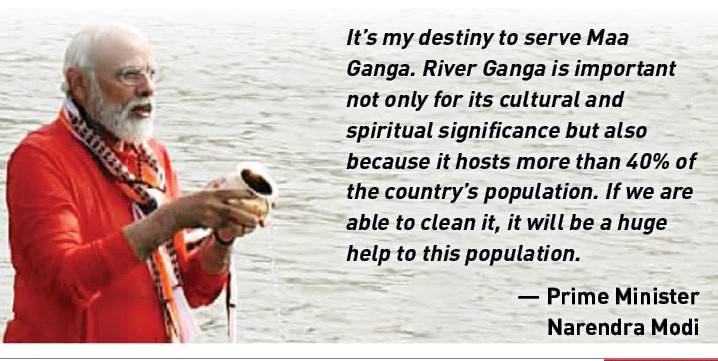
Innovative, positive & proactive approach- the keys to success
While there is a reactive approach towards the issue of Water & Sanitation in general, Mr. Kumar, while with the Ministry of Jal Shakti has always pushed forward a proactive approach to address the prevalent issues of water and sanitation at its source. Thereby creating a robust policy level framework, implementation and monitoring mechanism at a National Level, which is an extremely complex task in a densely populated country.
Mr. Asok Kumar’s belief in letting his work speak on his behalf was vindicated with an extremely rare occurrence, with 2 places in Telangana being named after him to honor him. Asok Sagar a 200-acre lake in Nizamabad district of Telangana, named after Asok Kumar the then popular Collector of the district. Asok Nagar, in Kadapa district, Andhra Pradesh is a new village settlement was so named in 2006 by the Chief Minister himself after the then Collector Asok Kumar, who had helped expedite the development of Kadapa district, during the tenure of Dr YS Rajasekhar Reddy as Chief Minister of Andhra Pradesh state, India.
Led by Mr. Asok Kumar, with immense experience of driving forward largely successful initiatives by establishing a strong foundation, the Ministry of Jal Shakti was able to achieve commendable participation & outreach. The impact is further amplified, given it was achieved during the times when the Nation was braving its worst ever health emergency of Covid-19.
During 2020-21
Under Catch the Rain campaign, as on 31-12-2021
• 33 Water Talks & 15 sessions of Water Tech Talks organized physically & virtually, to give people an opportunity to learn from the Water Leaders. 27 sessions of Dialogue with DMs organized to understand and learn the Best Practices in Water & Sanitation at District Level
• For State Specific Action Plans, 27 States & UTs have signed MoU with National Institute of Hydrology & North Eastern Regional Institute of Water and Land Management (NERIWALM) to develop action plans. Total amount of INR 145 Million sanctioned for Financial Assistance.
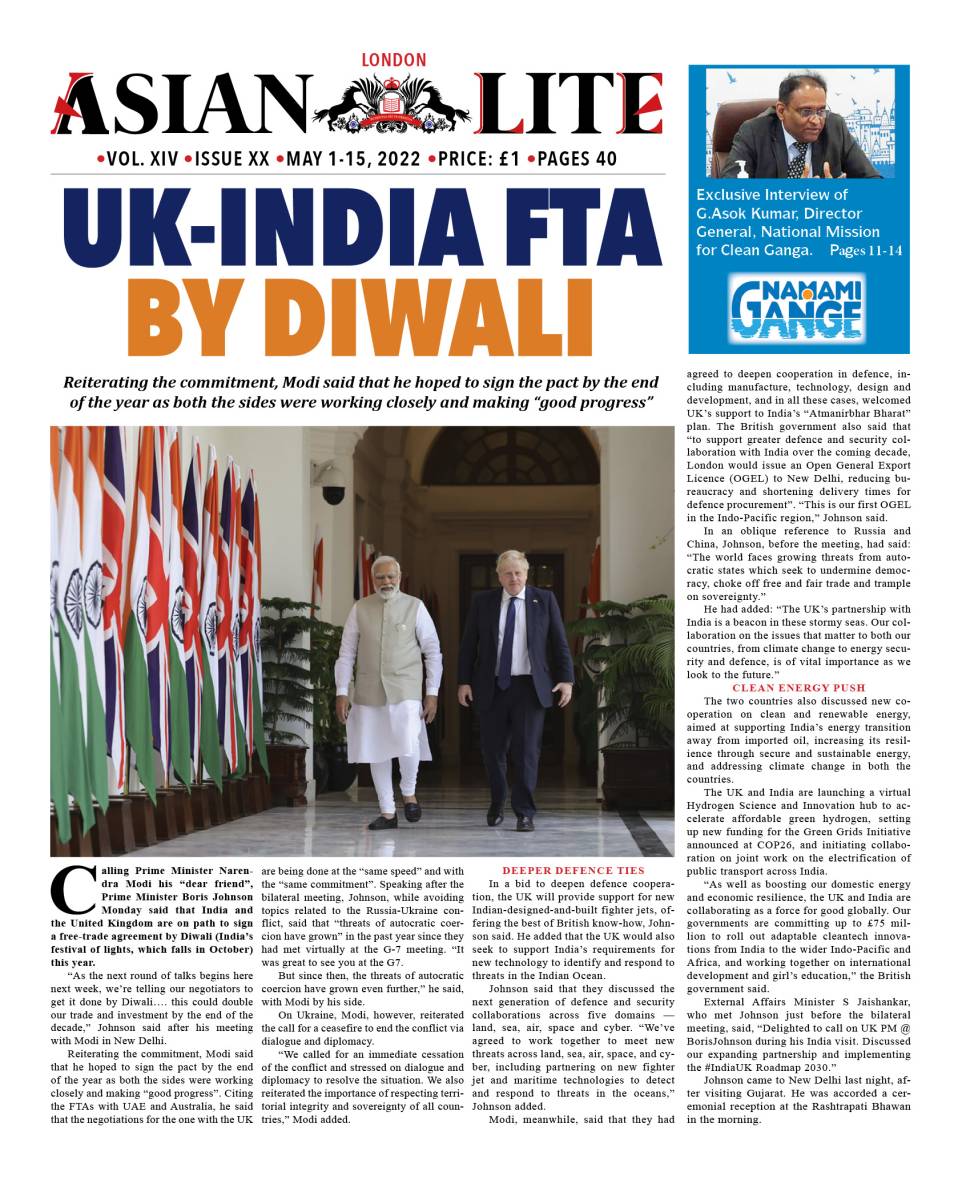

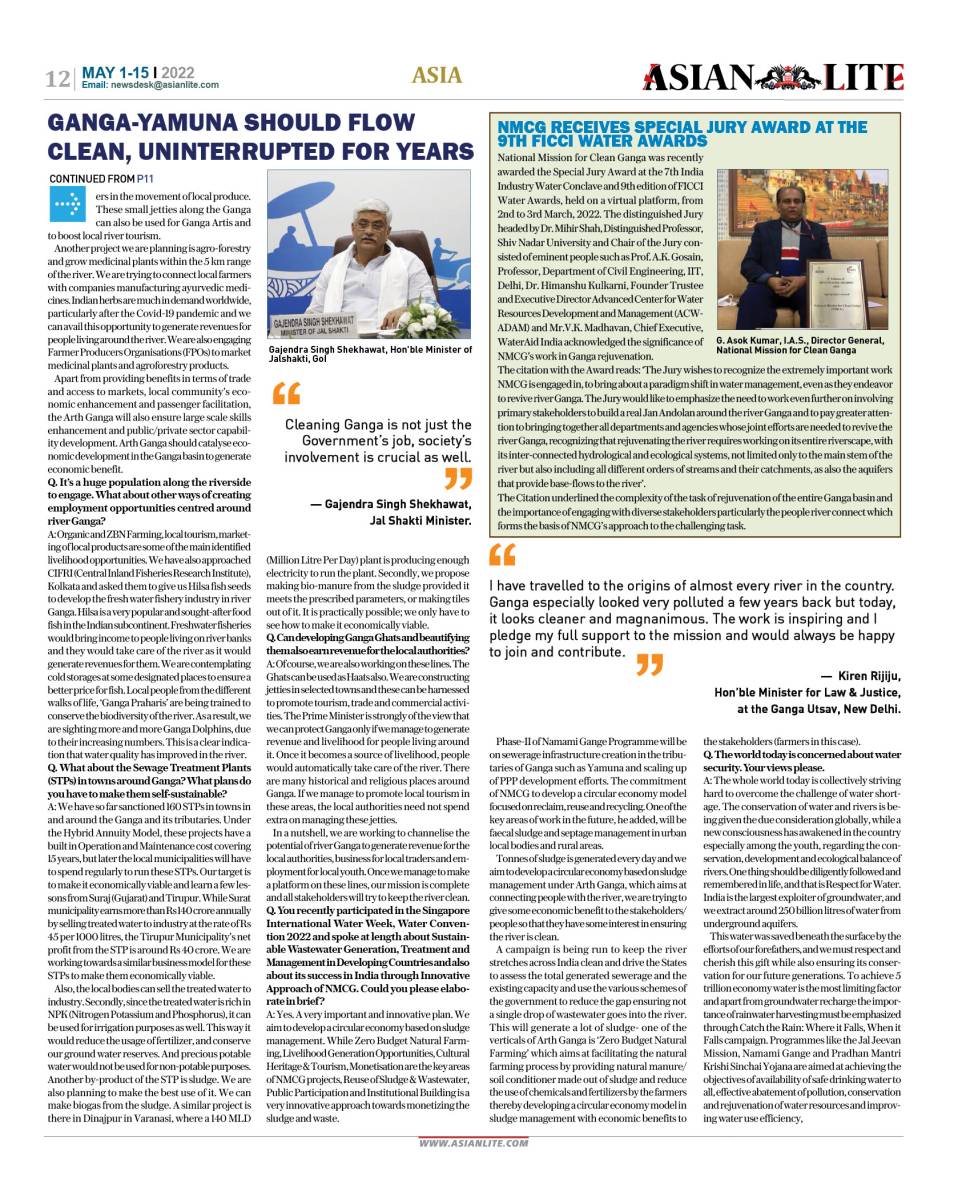
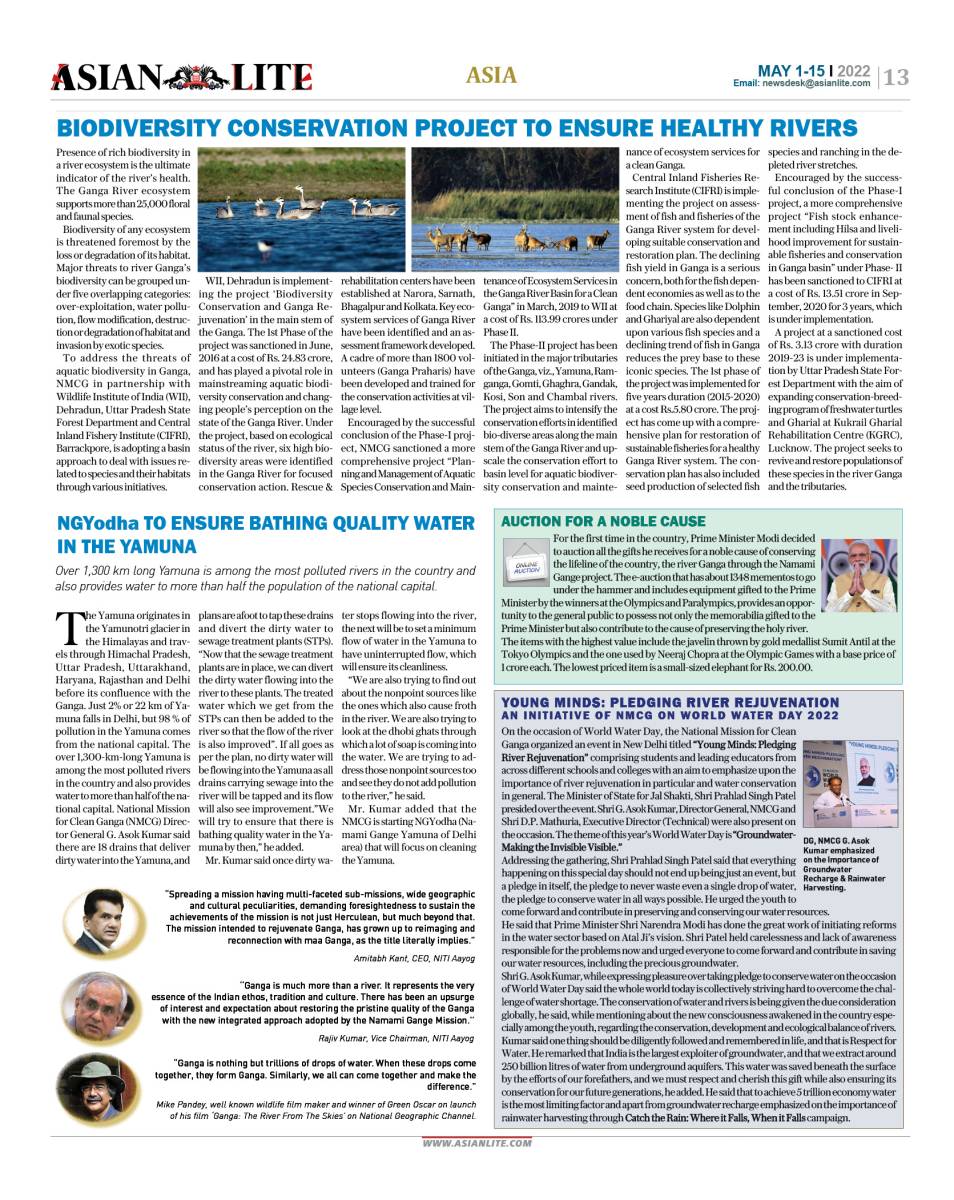

Leave a Reply